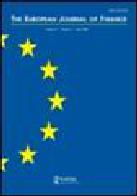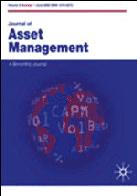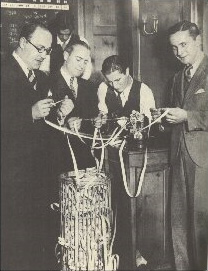
Passive indices do not reflect any of the money management skills necessary to generate profit out of the markets. As PPP theory demonstrates there should not be no real value in holding a long (or short) position in any currency over the long term. For this reason passive currency benchmarks fail to adequately describe the performance of currency funds because they have no embedded process to take into account the short positions that an active manager would take. Hence the correlation between passive currency indices and currency managers peer group indices tends to be low. Systematic traders rely primarily on trading programs or models that generate investment decisions signals. Trades are selected, entered into and exited according to such models. Discretionary traders rely on their experience and judgment to do so: although they may use some un-formalized system or model to back their trading decisions. The AFX, intends to replicate the risk/return profile of the average currency manager by using technical trading rules, namely trend following rules. The index builds on previous works by Lequeux & Acar (1998). The timing methodology embedded in the index relies on three moving averages of respective order 32, 61 and 117 days. The moving average method has been chosen amongst a large array of technical indicators because it is the most popular trading rule among futures traders. The goal of this basket of technical trading rules is to represent adequately the time horizons followed by investors while being simple and practical in its design. All investors do not work their strategies over the same time horizons. A day trader can trade anonymously and simultaneously with a pension fund: Each diversifies the other. To represent adequately all time horizons, the statistical properties of technical indicators have to be used. It was decided to build the benchmark around ex-ante measurable criteria of risk reduction and transaction costs. Each day moving averages are calculated for each currency pair involved in the benchmark. These averages are then compared to the current price of the currency pairs. Should the currency price be greater than the moving average the benchmark assumes that a long position is to be initiated or held for the next 24 hours, otherwise the reverse apply. The value of the benchmark is the weighted average of the returns earned by the set of three moving averages on each currency pair included in the benchmark. To reflect in a meaningful way the currencies that are dealt in the market the index has also weighted scheme derived from the triennial survey on foreign exchange turnover conducted by the Bank for International Settlements.
Lequeux, P. and Acar, E. (1998) “A Dynamic Benchmark for Managed currencies Funds”, European Journal of Finance Vol. 4.
Lequeux, P. (2001) “Trading Style Analysis of Leveraged Currency Funds” , Journal of Asset Management, Vol 2.
Contact Email: Pierre@lequeux.org
Historical Data
The attached file provides the historical time price series for the AFX both on a daily and monthly time frequency
*updated: 01/12/2014
The attached file provides the historical time price series for the AFX both on a daily and monthly time frequency
*updated: 01/12/2014
Disclosure
This website does not constitute an offer to sell, or a solicitation of an offer to buy or sell, any commodities interests, managed futures accounts or securities, and is intended for informational purposes only.I do not make any representations as to the accuracy or completeness of any data or information contained herein and such information should not be relied upon as such. Alternative investments products, including hedge funds and managed futures, involve a high degree of risk and can be volatile. An investor could lose all or a substantial amount of his or her investment. Past performance is not indicative of futures results.
This website does not constitute an offer to sell, or a solicitation of an offer to buy or sell, any commodities interests, managed futures accounts or securities, and is intended for informational purposes only.I do not make any representations as to the accuracy or completeness of any data or information contained herein and such information should not be relied upon as such. Alternative investments products, including hedge funds and managed futures, involve a high degree of risk and can be volatile. An investor could lose all or a substantial amount of his or her investment. Past performance is not indicative of futures results.


